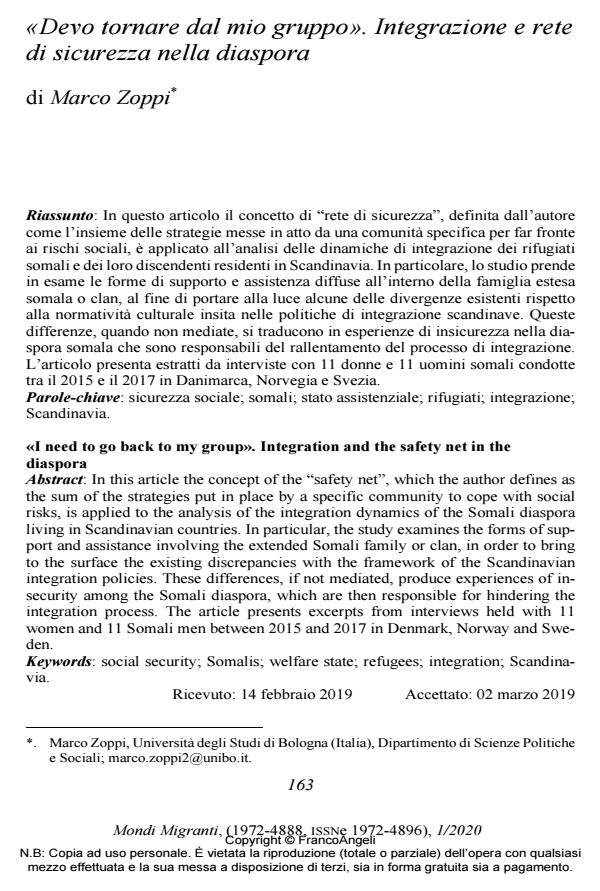«Devo tornare dal mio gruppo». Integrazione e rete di sicurezza nella diaspora
Titolo Rivista MONDI MIGRANTI
Autori/Curatori Marco Zoppi
Anno di pubblicazione 2020 Fascicolo 2020/1
Lingua Italiano Numero pagine 22 P. 163-184 Dimensione file 197 KB
DOI 10.3280/MM2020-001009
Il DOI è il codice a barre della proprietà intellettuale: per saperne di più
clicca qui
Qui sotto puoi vedere in anteprima la prima pagina di questo articolo.
Se questo articolo ti interessa, lo puoi acquistare (e scaricare in formato pdf) seguendo le facili indicazioni per acquistare il download credit. Acquista Download Credits per scaricare questo Articolo in formato PDF

FrancoAngeli è membro della Publishers International Linking Association, Inc (PILA)associazione indipendente e non profit per facilitare (attraverso i servizi tecnologici implementati da CrossRef.org) l’accesso degli studiosi ai contenuti digitali nelle pubblicazioni professionali e scientifiche
In questo articolo il concetto di "rete di sicurezza", definita dall’autore come l’insieme delle strategie messe in atto da una comunità specifica per far fronte ai rischi sociali, è applicato all’analisi delle dinamiche di integrazione dei rifugiati so-mali e dei loro discendenti residenti in Scandinavia. In particolare, lo studio prende in esame le forme di supporto e assistenza diffuse all’interno della famiglia estesa somala o clan, al fine di portare alla luce alcune delle divergenze esistenti rispetto alla normatività culturale insita nelle politiche di integrazione scandinave. Queste differenze, quando non mediate, si traducono in esperienze di insicurezza nella diaspora somala che sono responsabili del rallentamento del processo di integra-zione. L’articolo presenta estratti da interviste con 11 donne e 11 uomini somali condotte tra il 2015 e il 2017 in Danimarca, Norvegia e Svezia.
Parole chiave:Sicurezza sociale; somali; stato assistenziale; rifugiati; integrazio-ne; Scandinavia.
Marco Zoppi, «Devo tornare dal mio gruppo». Integrazione e rete di sicurezza nella diaspora in "MONDI MIGRANTI" 1/2020, pp 163-184, DOI: 10.3280/MM2020-001009